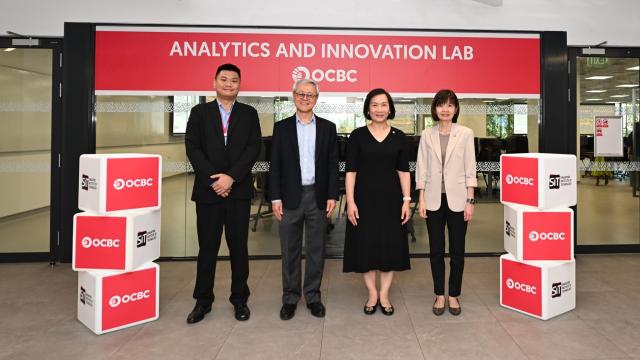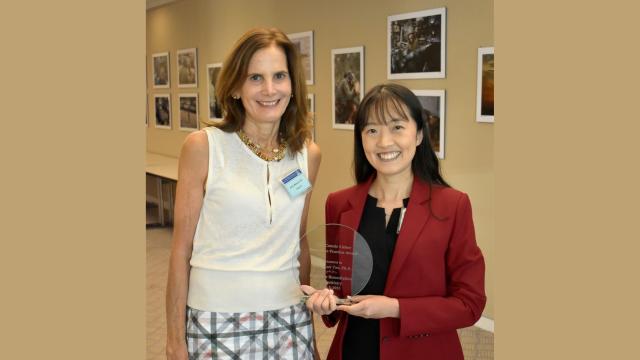SIT researchers get on the case to improve efficiency of pharma sector.

Surface science expert A/Prof Reginald Thio leads a research team who has been redesigning the cleaning processes of pharmaceutical plants
Think about the last time you had to clean up after cooking a big meal in the kitchen. After all that cleaning and scrubbing of the stove, the countertop, and the sink, you would probably swipe your finger over the surfaces to ensure you have cleaned out the grease and grime. If your finger feels oily, it means another wipe down is in order. It is not the most scientific method, but it works.
This finger swipe test is not just something we do at home. In pharmaceutical companies, operators often perform this test as one of the last steps of cleaning, as a rough gauge of how clean their manufacturing plants are.
Take for instance, a company that manufactures paracetamol tablets. Once a batch of the drug is done, the company will need to clean the manufacturing plant to get it ready to produce the next drug.
This process involves flushing the reactors and piping systems with common solvents, such as water or methanol, to rid the stains and buildup on the surfaces. The operator will then swipe a finger over the surfaces to judge if they are sufficiently cleaned. As a final step, they run a test on the resulting solution and see if it passes the cleanliness standard set by the United States Food and Drug Administration (FDA).
Breaking down stains with science
“The cleaning process is kind of random and rudimentary. There’s no scientific understanding, and there’s a lot of guess work,” said Associate Professor Reginald Thio, adding that the finger swipe test is also based on one’s subjective judgment.
“Such an imprecise method means inefficiency, leading to longer downtime caused by cleaning, which can be as long as two weeks. These are perennial pain points in the industry,” he shared.
A surface science expert, A/Prof Thio is trying to crack this problem together with the Agency for Science, Technology and Research’s (A*STAR) Institute of Chemical and Engineering Sciences (ICES).

The team of SIT researchers collaborating with A*STAR Institute of Chemical and Engineering Sciences on making pharma plant cleaning processes more efficient (from left): Chan Hui Ling, Research Engineer, A/Prof Thio, Co-Principal Investigator, and Darrel Len, Research Engineer.
Working with four pharmaceutical companies, he and his colleagues at the Singapore Institute of Technology (SIT) are trying to understand the particles created from the pharmaceutical manufacturing process, how they adhere to surfaces, and the best way to remove them.
They researched how certain stains and deposits may be removed better with specific solvents, instead of a one-size-fits-all approach.
They are studying the manufacturing residue and stains of some of the top 10 most produced drugs in Singapore, which include betamethasone, a corticosteroid, cabotegravir taken by HIV/AIDS patients, and the anti-diabetic medication sitagliptin.
It is a complex process. First, the pharmaceutical companies will send the SIT team samples of the drugs they produce. The team will then reverse engineer relevant parts of the manufacturing process in A*STAR’s laboratory to replicate the stains, in order to study them. After that, they try various methods to figure out the most effective and efficient way to remove these stains.
The team tries to ensure the process is as close to what goes on in a manufacturing plant as possible, but there are limitations. For example, drugs in a manufacturing plant are produced in cylinders. But in a lab environment, the stains are created on flat surfaces to enable analyses by analytical equipment.
They also have to be extra careful when handling the drugs. “We are dealing with very potent medicine. We have to put on the full PPE (personal protective equipment) gear because we don’t want to end up inhaling the drug compound,” said A/Prof Thio.

Part of the research includes lab trials such as the staining of tokens with Active Pharmaceutical Ingredients, and testing for various solutions.
Setting the gold standard for cleaning
The joint ICES-SIT team is producing results. It developed a cleaning methodology using a new solvent to replace acetonitrile, that helped pharmaceutical company GSK save costs and cut turnaround time.
“Pharmaceutical companies will always want the turnaround time to be as short as possible so that the plants can start working on the next batch of drugs.”
But A/Prof Thio is aiming to create an industry standard that will inform pharmaceutical operators on how best to clean for which drug.
“It can be a flow chart, a standard operating protocol, or a table, where you can easily see that for a particular drug, I will need to use a specific solvent for a determined amount of time. It would be useful to have some sort of a catalogue that charts the science behind various methods, and how clean the plant will be based on those recorded methods,” he said.
“What we are doing now is the first step towards creating this holy grail book for the industry.”
![[FA] SIT One SITizen Alumni Initiative_Web banner_1244px x 688px.jpg](/sites/default/files/2024-12/%5BFA%5D%20%20SIT%20One%20SITizen%20Alumni%20Initiative_Web%20banner_1244px%20x%20688px.jpg)


